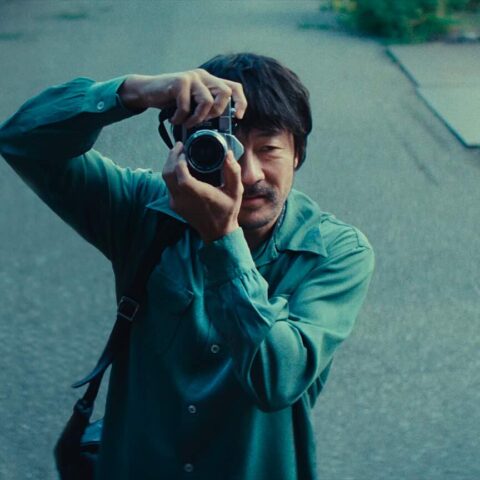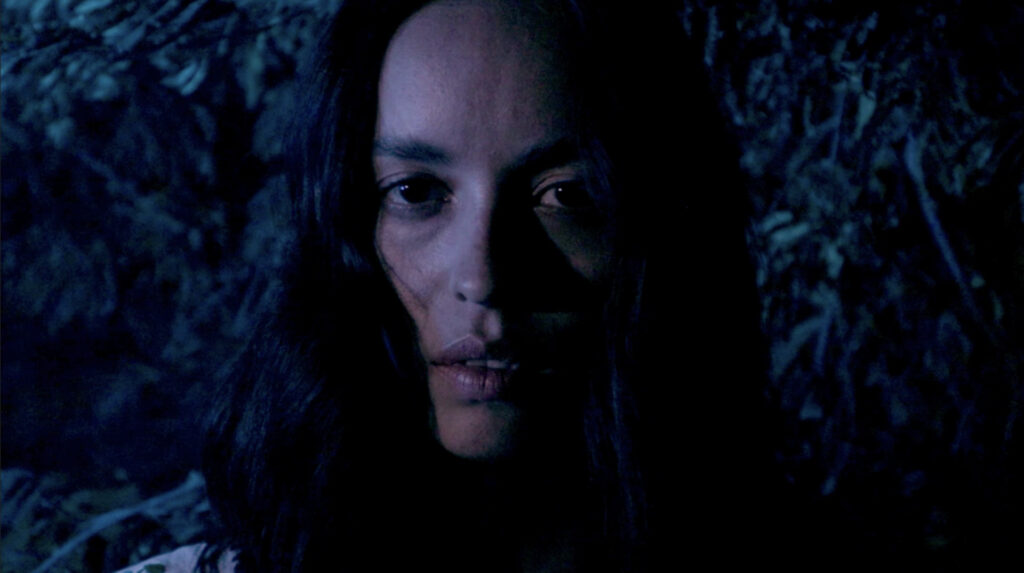
In this interview, we catch up with Carlos Arjona, an emerging talent from Cancún, Mexico, who’s quickly gaining attention in the indie film circuit. As a multi-faceted filmmaker—director, writer, actor, and producer—Carlos has carved a niche by bringing Mexico’s rich cultural heritage to the screen. His latest short film, Far Away from My Town, delves into the haunting Mayan legend of X’tabay, blending horror and fantasy with a contemporary twist. As the founder of AMMC Estudio Creativo, Carlos continues to push creative boundaries, following the success of his earlier works, Uno con el viento and Lejos de mi pueblo. In our conversation, he opens up about the inspiration behind his latest project and his vision for the future of Mexican cinema.
How has growing up in Cancún influenced your creative vision as a filmmaker and storyteller?
One main influence on my vision is that my father used to read Stephen King’s novels and then he would tell the story to me and my brothers on the way to school, I remember he would leave us at school and I’d be waiting for the day to end so he came back to pick us up and continue the stories on the way home, because my mother would not like that he told us these horror tales like Christine, Cujo, The Dark tower, Pet Sematary, and Carrie, it was until my teenage years when I watched the movies of those books.
In late 90s my family had to move to Cancun because of my father’s job, there was no Film scene or industry, neither Film schools (the closest being in Mexico City and when I was ready for college I didn’t feel like parting from home yet) so being a filmmaker was something that looked very far from me. Still this scenario somehow motivated me to look at it as a very unique job and a dream goal. I wanted to be able to do these fantastic things called movies, the stories in image that create emotions. So, eventually I moved to Mexico City where I shot two shorts “Lips and feathers”, and “One with the wind” before “Far away from my town”, my vision after all these years is to try and create emotions in my audience while entertaining them.
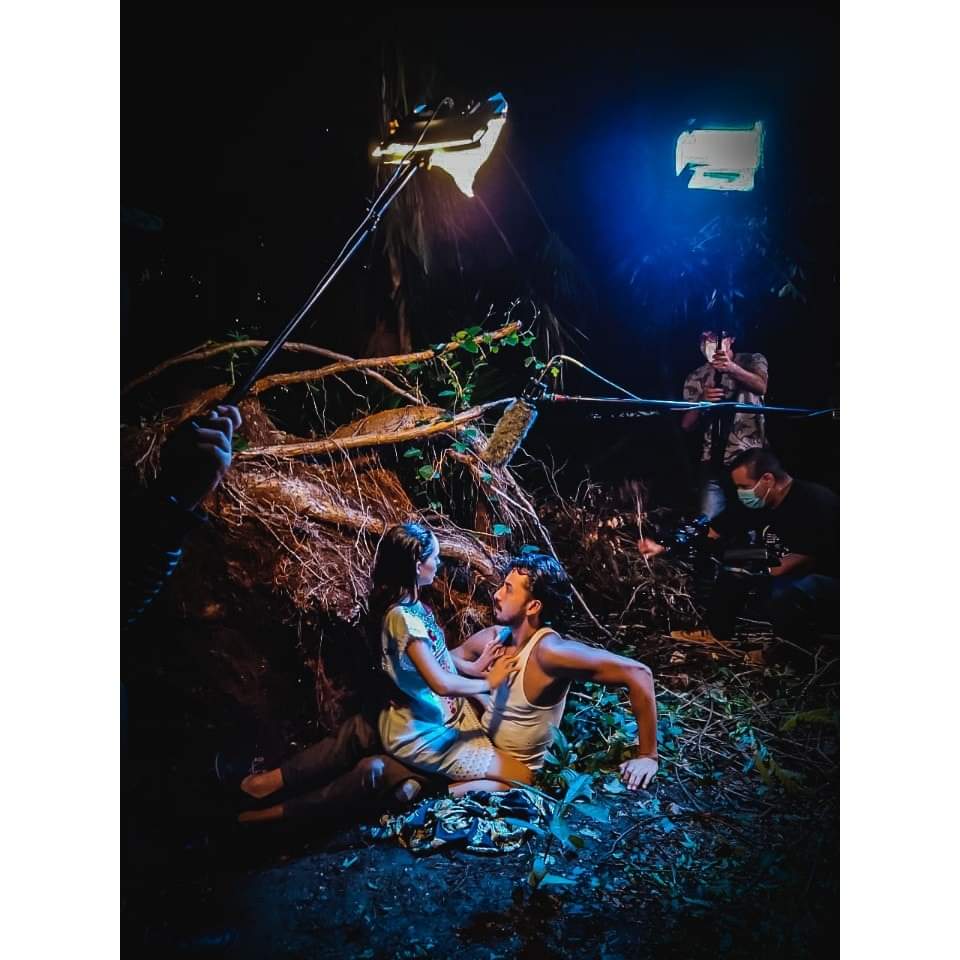
What inspired you to focus on the Mayan legend of X’tabay in “Far Away from My Town”, and how does your personal connection to Mexican culture shape your approach to this story?
This was a horror story that I started to hear about, when I arrived to Cancun. I was in junior high school and heard it from other kids. So, the first approach I had to it was that she was a kind of “La Llorona” but specific to the Yucatan Peninsula. As I grew up, I would listen to the legend different times and from different people, then I learned that it was a Mayan legend, and not necessarily a horror one.
When writing this film, I learned how the myth changed from prehispanic times to the colony and until today. For instance, in Mayan times X´tabay was not a diabolical creature, she was a free spirit of nature.
Mexican native folk lore has a lot of stories, rites, songs, traditions and food, that are a gate to a marvelous forgotten world and in all my previous films as a writer/director, these elements are present but only as references. This time I wanted the movie to be specifically about it, packed in a horror / suspense envelope with a grindhouse rusty vibe.
As a Mexican I am so fascinated, inspired and proud of my culture and as a communicator I feel it is my responsibility to continue the legacy of my ancestors in the stories I tell.
The character of Nacho faces an internal struggle tied to ancient Mayan teachings. How did you develop his character, and what does his journey symbolize in the context of the film?
The persona of Nacho is inspired by a real Mexican country musician I worked with many years ago. I directed a music video for him, and all the time I told him I imagined him as a monster hunter, that would travel the roads of Mexico touring with his band and slaying horrific creatures. Nacho’s history came later, when I learned more about México’s witches, shamans and nahuales (shapeshifters), and I realized that he would have more chances against magical creatures if he had some powers as well, so I made him a shaman. But all power comes with sacrifice, Nacho’s past is detailed in another story that I will not spoil now.
At the time of “Far away from my town” Nacho is fulfilling a list of targets that will lead him to the location of a dear long missing person to him. But while searching for his objectives he must face alcoholism and all the memories that start to haunt him in drunkenness.
X´tabay is a spirit of nature that feeds on weakened men’s souls and she finds prey in Nacho, sadly she realizes too late that she is also being hunted.
What role do you believe cinema plays in preserving and sharing indigenous stories with newer generations, and how important is this to you as a filmmaker?
Cinema is so important and crucial for the preservation of indigenous stories, books, traditions and music. Even the archeological sites are not displaced, but movies are the current most massive and effective way to tell any message.
There is an actual Aztec prophecy which says that 500 years after the fall of Tenochtitlan (the capital of ancient Aztec empire) in 1521, a reawakening of the native conscience would happen. Its already three years since that and I have seen how many artists and communicators are inspired and sharing ancestral stories. I see myself as part of a larger wave of energy, which some might call a trend, but I view myself as a channel for a message that already exists.
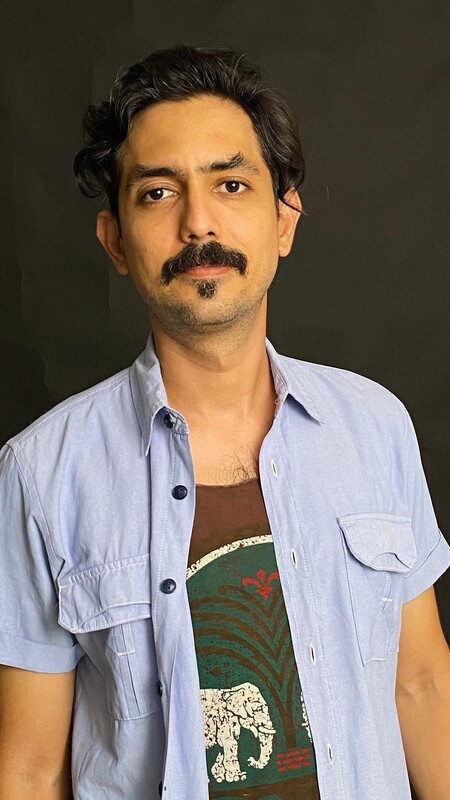
You have a diverse background as an actor, director, and writer. How do these different roles inform each other in your work?
I think it’s the trifecta; the three jobs are deeply connected and complement each other. I believe all three can be enjoyed in different ways. I started acting professionally just five years ago, and being directed has taught me a lot about how to work on set with the cast of my own stories. In scriptwriting, acting has sharpened my ability to convey certain elements, information, and intentions within the text to the cast. In other words, it has taught me what actors need to achieve the desired performance.
How did you balance the elements of horror, suspense, and fantasy to create a unique atmosphere in “Far Away from My Town”?
The legend itself is infused with elements of horror, suspense, and fantasy. Even without knowing Nacho’s backstory, just hearing it transports you to a mysterious, ancient rainforest atmosphere. For this reason, I made sure that everyone in the crew, especially my two main actors, were familiar with the legend. I had a discussion with them about my perspective on it and how it has been perceived by different generations.
Then, with my co-writer Miguel Delgado, we distilled it into a story that required as few sets as possible: the interior of a car, the side of the road, and the jungle.
The Yucatán jungle plays a crucial role in the film. How did you approach the cinematography to capture the mystical and eerie essence of the jungle?
Even though the story takes place in the middle of the jungle, we shot those scenes in a park in a nice neighborhood in Cancun. We had to do some scouting to find a location that offered the vegetation I needed, especially the ceiba tree, which plays an important role in the legend. For the Mayans, the ceiba is a sacred tree that connects the spirit realm to our physical world. I focused on using close-up shots to avoid revealing the urban environment and to create tension in the audience.
For the highway rolling shots, we barely left the outskirts of the city, but it’s true that Cancun is surrounded by deep jungle. With the city’s growth and increasing tourism, encounters with wildlife in these areas have become more common. As for the dark ambience, it was not so difficult to achieve, since we didn’t use more than five lights on each set. This resulted in the gritty grainy look I was searching for.
What were some of the practical challenges you faced during the filming in the Yucatán jungle, and how did you overcome them?
We shot the jungle scenes in a park within Cancun, but most of the movie was filmed on exterior sets, which always represent a challenge when working in nature. On the first day of shooting, we had to shut down production due to rain. On the last day, Moe Palaú, who played X’tabay, was bitten by ants on her foot. While filming at the park, the neighbor providing us with electricity got fed up, and we lost power for several hours.
The Volkswagen Beetle was difficult to drive because of its oversized 4×4 tires, so we filmed the dialogue scenes on an interior set. For the rolling shots of the car, I ended up driving it myself. Issues like these came up, but fortunately, most of the crew had faced similar situations in the past, so we just kept going.
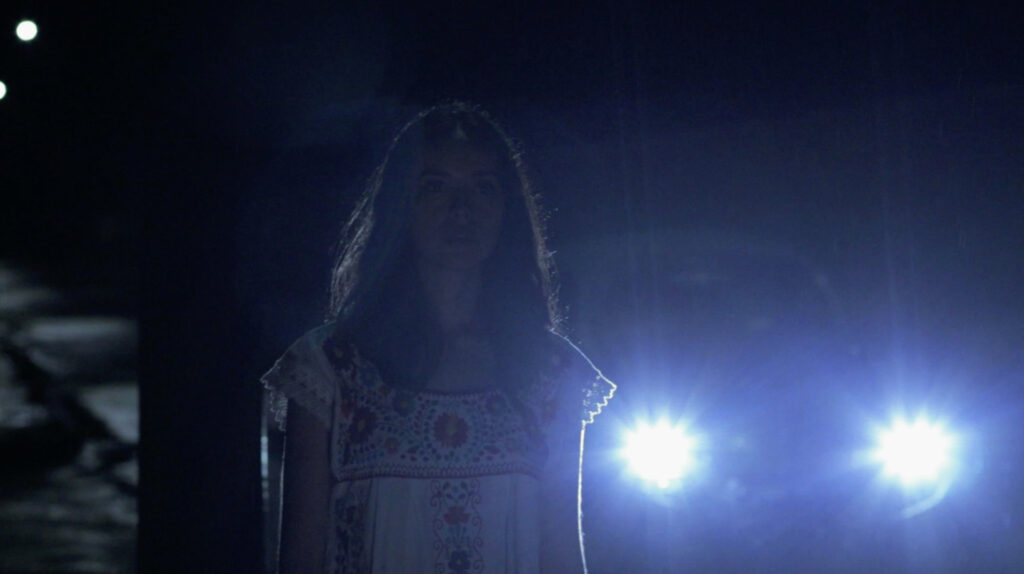
How did you incorporate traditional Mayan lore into the storyline, and what kind of research did you undertake to ensure authenticity?
I’ve known the legend for many years, but when I began writing the script, I took the time to research it further. Since it’s folklore, there isn’t much written about it, but I did find references to the myth in the works of Mexican authors like Juana Alicia Tirso González. There are also poems and songs about X’tabay that can be found online. At that time, I had a roommate from Valladolid, a Yucatec town. He speaks Mayan and knows the story from his parents and grandparents, who are of Mayan descent. He was a great resource, helping me cross-reference with what I found in multimedia sources. He also helped translate the few phrases X’tabay says in the final scenes into Mayan.
From him, I learned that X’tabay was originally part of a myth about two beautiful sisters, X’tabay and X’kólel. X’tabay was so selfless that she would give herself, body and soul, to anyone in need and guide them through the Mayan underworld after they committed suicide or made a self-sacrifice to the ancient gods. When Christianity arrived, she was then considered promiscuous, and her myth was gradually transformed into a cautionary tale of a seductive devil woman, meant to scare Mayan slaves into not getting drunk after a day’s work in the fields for fear of encountering her on their way home.
In the end, “Far Away from My Town” is a blend of the pre- and post-Hispanic versions of the legend, along with my own interpretation of a nature spirit confronting a human who has learned an ancient knowledge similar to her own power.
Can you share more about your vision for a contemporary universe of heroes and villains inspired by Aztec and Mayan lore? How does “Far Away from My Town” fit into that larger narrative? Are you planning to make a feature film set in this universe?
Yes, I am planning to either make a feature film or a series that encompasses several characters with backgrounds deeply rooted in both Aztec and Mayan myths. In Mexico, there are stories about witches, ghosts, undead, shapeshifters, deities, and supernatural creatures that once lurked in the jungles and temples. In my “mexa-verse,” as I like to call it, these characters become entangled in a series of events that reflect Mexico’s current social reality. Themes like urban life, drug trafficking, government corruption, discrimination, and coming of age connect five seemingly different stories that take place in the same period, across the Yucatán Peninsula, eventually converging in the city of Cancun.
“Far Away from My Town” serves as the introduction to these two characters, Nacho and X’tabay, who will become part of this larger narrative, encountering new allies and enemies along the way.
What do you hope international audiences will take away from their exposure to Mayan mythology through your film?
I hope they enjoy watching the movie, and if possible, that it sparks a sense of curiosity about native Mexican mythology. Eventually, I’d love to see these stories presented in a larger format, just like the Greek, Viking, Celtic, and other mythologies that have endured through the years.
How do you see the future of Mexican cinema, particularly in the genre of horror and fantasy that draws on cultural mythology?
Mexico is thriving in cinema, with great directors across various genres making it to international platforms in recent years. In horror, we must not forget the great maestro Guillermo del Toro, whose films like “Cronos” and “Pan’s Labyrinth” have been both an inspiration and a masterclass for me. There are also new directors like Isaac Ezban, Michelle Garza Cervera, and Luis Javier Henaine, who are producing horror movies that show a strong influence from Mexican mystical stories.

Can you tell us more about the documentary you are currently producing on ritual dance and temazcal? What drew you to this particular subject, and how does it connect to your broader body of work?
This is the second documentary I’ve made. The idea came to me after working as the extras coordinator for a French movie shot in Mexico called “Le Dernier Jaguar” (Ella und der schwarze Jaguar), directed by Gilles Di Maestre. The film was shot entirely in the jungle, and I coordinated an indigenous village for the project. Some of the villagers turned out to be traditional Aztec dancers, and after we finished the movie, they invited me to join their group activities. Participating in the “temazcal” (an ancient practice similar to a sauna) and dancing with them to the rhythm of drums and rattles ignited a deep need in me to share the powerful message embedded in these practices. Through this experience, I gained a deeper understanding of the Aztec prophecy I had previously mentioned, which became a personal quest that inspired me to create this documentary.
How does it connect with my fictional work? Well, all my films portray Mexico in some way, and I’ve realized that my country is my primary source of inspiration. So, I feel it is my responsibility to share this with the audience I’ve built.
What advice would you give to aspiring filmmakers who want to explore and incorporate their cultural heritage into their storytelling?
I believe cultural heritage is a great source of inspiration and honoring it through your work is a deeply satisfying feeling. This knowledge is already available to us; it is a gift that we must appreciate and be thankful for.
Can you talk about the collaboration process with your crew, especially in translating the ancient lore into a visually compelling story?
I love telling stories—not just through film, but verbally as well. I enjoy telling jokes, reading to my girlfriend, and playing DnD and other role-playing games. For me, sharing the legend with the crew and cast was a crucial part of the process. Most of them were already familiar with the story, as it’s very popular in the region, but setting the tone was essential. These verbal storytelling sessions became a regular part of our work, and I even used a soundtrack composed of tribal Mayan music to enhance the storytelling experience.
With my two lead actors, I had in-depth conversations about their characters, Nacho and X’tabay, including background details that aren’t shown in the film. I also provided them with references to similar characters from film and literature. For X’tabay, I was inspired by Cate Blanchett’s portrayal of Galadriel, and for Nacho, we drew inspiration from Van Helsing as well as the Mexican luchador El Santo, who starred in 1950s films where he fought mummies, werewolves, and vampires.
Essentially, I kept retelling the legend: a seemingly lost, drunk man wandering the jungle encounters the feared, devilish seductress. The twist is that he is not an ordinary man, but a shaman hunting magical creatures. I hope the audience perceives this story as more than just a clash between good and evil, but as a collision of two supernatural forces.
I worked hard to translate these ideas into physical elements: the jungle setting, X’tabay’s traditional Huipil dress, the Volkswagen Beetle, which I see as a character in itself, the shamanic altar inside, the obsidian knife, Nacho’s pistol, the snake, and all the various art department details.
Official website of AMMC Studios – https://ammcestudiocreativo.com/en/
